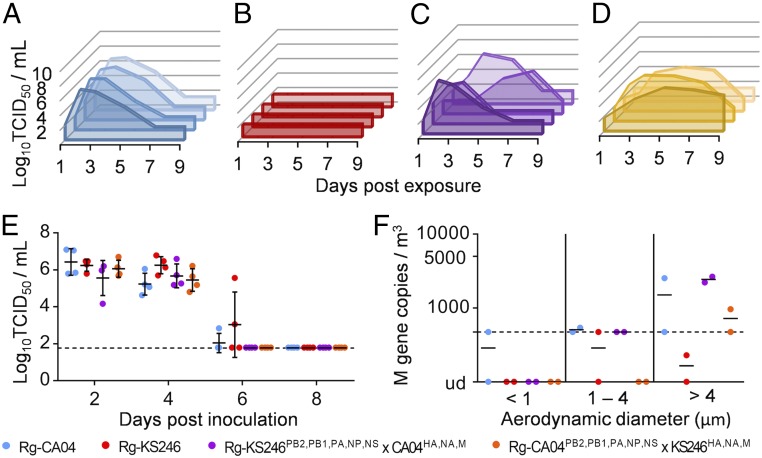Fig. 4.
Multiple viral gene segments from CA04 confer enhanced transmissibility of KS246 by increasing the release of virus-laden particles into the air. Transmission of (A) Rg-CA04, (B) Rg-KS246, (C) Rg-KS246PB2,PB1,PA,NP,NS×CA04HA,NA,M, and (D) Rg-CA04PB2,PB1,PA,NP,NS×KS246HA,NA,M recombinant viruses among ferrets via virus-laden particles that passed through the 5.3-µm impactor. Viral titers (log10TCID50/mL, detection limit at 1.789 log10TCID50/mL) detected in the nasal washes of each recipient ferret. For each recombinant virus, the experiments were independently repeated twice with a total of four recipients. (E) Viral titers detected in the nasal washes of donor ferrets inoculated with 105 TCID50 of the recombinant viruses. Data were plotted for individual donor ferrets (n = 4) and overlaid with mean ± SD. (F) Quantity and size distribution of influenza virus-laden particles sampled from the donor chambers during the exposure period by using the NIOSH bioaerosol sampler. The limit of linear range of quantification (476 M gene copies per cubic meter) is shown. Data were plotted for two independent exposures and overlaid with medians.

